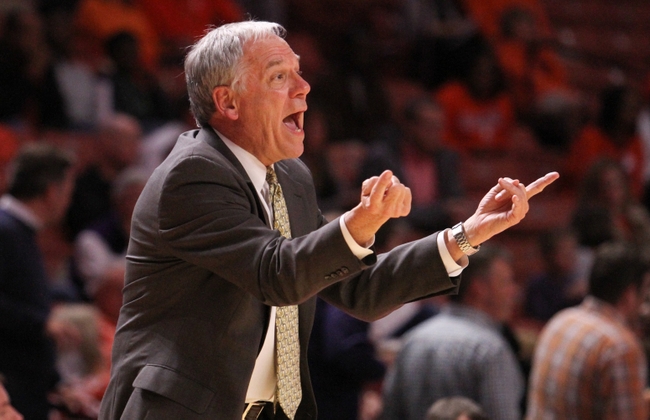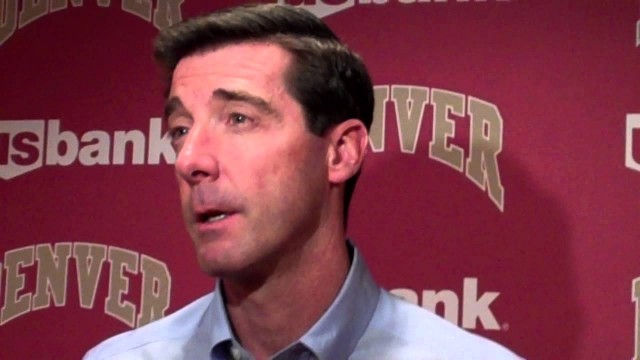In a sport with 351 head coaches, a lot of stories are waiting to be told.
Typically, the stories which capture the headlines are the stories of the men who lead their teams into the Madness of March. However, basketball is bigger and broader than just the sweet sound of success. It’s also about the competitors who lose and struggle. It’s about the men who strive but fall… which makes any subsequent breakthroughs that much sweeter.
College basketball is about the winners, yes, but it’s also about the people who dedicate their lives to the game — sometimes with a payoff, but often with an ample number of seasons which end quietly, in the somber atmosphere of defeat.
A few days ago, we looked at college coaches over the age of 50 — all hired in the previous decade –who had never led any of their teams (at any collegiate level) to a national championship postseason tournament. These men have walked many miles along the path, hand in hand with the game of basketball, and have traveled too far to turn back now or reset their careers for a different pursuit. James Jones of Yale can taste that first NCAA tournament appearance at Yale, but he has three more weekends of work to do in order to capture that prize.
In this piece, we’ll look at a different subsection of the college basketball coaching community. These men are also over age 50 — having committed to a life in gymnasiums and on recruiting trips — but they have tasted success at one point in the past. For these lifers, a previous coaching stop has offered a glimpse of triumph, a morsel of merriment; however, that moment was fleeting, and not necessarily enough to satisfy the burning competitive hunger which drives us.
This group is what one could refer to as “The Second-Chance Club.” These men, just as married to the game as those without any experience of supreme accomplishment, are searching for that unique form of career validation: getting the job done at a second coaching stop. These men want to be able to know that they can thrive in two places, not just one.
They’ve been at their jobs since the past decade (2009 or earlier). They have not yet broken through and reached the NCAA tournament at their present places of employment. They’ve all shown they can reach the goal their profession puts before them, but now they want to duplicate that feat… and have realized over many years how hard it is to hit that particular target.
These are their stories.

Dec 2, 2015; Greenville, SC, USA; USC Upstate Spartans head coach Eddie Payne reacts during the first half against the Clemson Tigers at Bon Secours Wellness Arena. Mandatory Credit: Dawson Powers-USA TODAY Sports
Eddie Payne is something of an exception to this dynamic, but we’ll include him here, because the portrait of struggle is still very much a part of his life experience as a coach. Payne made the NCAA tournament with East Carolina back in 1993. He then took a power-conference job, but could not do anything in five seasons at Oregon State. Payne went to USC Upstate, which at the time was a Division II job. Payne led the Spartans to the Division II NCAA Tournament in 2005 and 2006, but then the Spartans made the upward move to D-I competition and the Atlantic Sun Conference. Payne has made the NCAA tournament with his present employer… just not the D-I version. He made a strong run at the brass ring last season but fell just short. He’s nine seasons into the D-I portion of his journey at the school located in Spartanburg, S.C.
If he can make the D-I version of the Dance, his career will certainly acquire an added measure of fullness.
*
Jerry Slocum has won over 700 games. He spent 30 years coaching at three different small colleges, making NAIA tournament appearances and earning NCAA Division II postseason berths. In 2005, Youngstown State hired him, and Slocum has learned how hard it is to tame the Division I beast. In a full decade, Slocum has been unable to put on Dancing shoes. He’s obviously very good at what he does, but a Dance card in Youngstown would represent a higher stratosphere of professional achievement.
*
Tim O’Shea, without any NCAA appearances at Bryant in the Northeast Conference, and Larry Hunter — bereft of any NCAA trips with Western Carolina in the Southern Conference — both made the NCAA tournament at Ohio University. They’re pursuing a second date in the Dance.
*
Two coaches whose “second-chance” journeys will not have happy endings: Bruiser Flint is probably on his way out at Drexel. He made the NCAAs with Massachusetts, but could not get Drexel over the hump. John Brady — who led LSU to the 2006 Final Four — never led Samford to the NCAA tournament. After this eighth season at Arkansas State, Brady will resign. Barring a miracle run through the Sun Belt Conference Tournament, Brady will go 0-for-8 in terms of making the Big Dance in Jonesboro.

PIONEERS, O PIONEERS! Joe Scott has tried to lead Denver to its first NCAA tournament, but after almost a decade on the job, that goal remains elusive. The Pioneering pursuit continues for a man dedicated to the process of coaching.
Joe Scott toils away in Denver as the coach of the Pioneers. He made the NCAA tournament a few miles to the south in Colorado Springs. He followed Interstate 25 and found the road to Bracketville at the Air Force Academy. Scott loves to tout the notion of a “process” just as much as Nick Saban does, but his process has not led to a Pioneering moment in the Mile High City since his arrival in 2007.
*
James Green made the NCAAs with Mississippi Valley State in 2008, and he used that accomplishment as a jumping point. He landed at Jacksonville State later that year. However, eight seasons into this new go-round with the Gamecocks, Green has not been able to reach the NCAA threshold a second time.
*
Bill Herrion made the NCAAs with Drexel (before Bruiser Flint took over the program), but leading New Hampshire has been a much more difficult task. The Wildcats, profiled here by TSS’s own Mike Abelson, have never made the NCAA tournament. A number of the other coaches in this piece are piloting schools which have also never stepped on the Dance floor. (Examples: O’Shea at Bryant; Slocum at Youngstown State; Green at Jacksonville State; Payne at USC Upstate; Scott at Denver; and another coach who will be mentioned below.)
If Herrion can lead New Hampshire to Bracketville, his career — like the careers of other men in his position — will acquire a dramatic and satisfying new chapter after all these years of labor.
*
Last but certainly not least, Tony Shaver of William and Mary — who flourished in NCAA Division III competition — has been the Sisyphus of college basketball. The Tribe are one of five teams saddled with the dubious distinction of being 0-for-77 in terms of making the NCAA tournament. (The other four: The Citadel, Army, Saint Francis (Brooklyn), and Northwestern.) Shaver has come within one win of the Dance each of the past two seasons. In 2014, Bill and Mary (and Tony) came within one basket of Valhalla, but Delaware nudged the Tribe, 75-74.
William and Mary just whacked the leader of the Colonial Athletic Association, UNC-Wilmington, to move to third in the league standings. Shaver will have the support of many college basketball fans as he tries to dream the impossible dream with his team this March.

